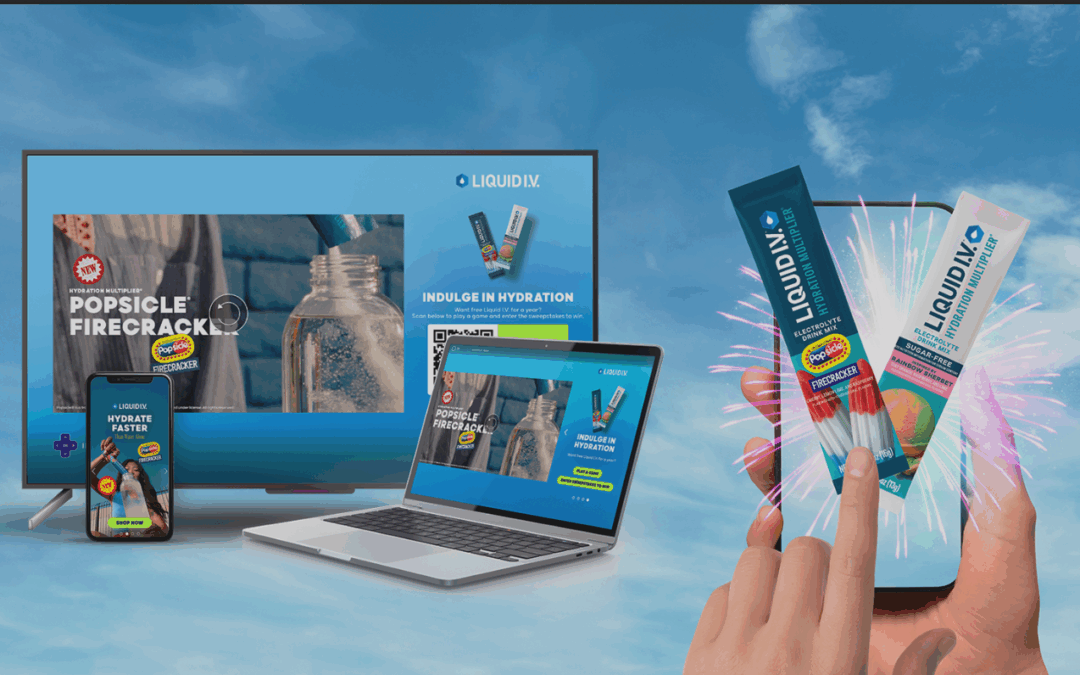Brands are on Board with CTV Advertising. What About Consumers?

This article was originally published on Campaign Live.
Consumers, beware: Here come the advertisers — en masse.
As streaming networks roll out ad-supported options, there are more and more advertising opportunities hitting our cord-cut-smart-TV screens. By giving up ad-free streaming in exchange for lower or no monthly subscription costs, consumers are opting for brand bombardment. With ad-supported content from Netflix and Disney+ and the 2023 launch of Warner Discovery’s AVOD tier, there will not be a lack of opportunity for marketers to ride the CTV wave.
This is exactly what marketers have always wanted, right? Brands, hyped about a medium that blends TV’s premium ad canvas with sophisticated targeting, are pouring money into CTV advertising. Indeed, CTV spending is expected to exceed $43 billion in 2026, says eMarketer.
But will consumers tune in? Not if they are blasted by a slew of repetitive, mass-market ads ported over from linear TV. That isn’t what CTV is supposed to be about. And it bears repeating: Viewers aren’t choosing lower-priced subscription services because they want to see more advertising. According to a recent Infillion/Ipsos study, they’re willing to put up with ad breaks because they welcome time for a snack or a visit to the bathroom. That’s what marketers are competing with to win consumers’ attention.
With 2023 shaping up to be a turning point for CTV advertising, there are many reasons to celebrate — and many more to proceed with caution.
As CTV grows, let’s remember how consumers reacted to an onslaught of intrusive ads served by programmatic in the aughts. Brands overlooked user experience and alienated consumers who couldn’t wait to install ad-blockers on their devices.
Rather than repeat those mistakes, what can marketers do to keep viewers engaged in a CTV environment with a growing number of commercial breaks?
Give Viewers More Control
In the earliest days of CTV, Hulu allowed users to choose ad categories and even preferred ad lengths, while YouTube introduced skippable ads. Consumers felt respected, and it became clear that this medium could be different. Why not ask consumers what they want and listen to what they say?
By making it easy for viewers to give feedback on ad experiences (think scanning a QR code on the TV screen to answer a mobile questionnaire), publishers and brands can fine-tune the ‘A’ in AVOD to be more compelling for consumers.
Make Ads Interactive in Better Ways
Remember when digital ads were called ‘interactive advertising’? By now we know that a remote control makes a clunky ad-response vehicle. Brands might learn from young viewers’ use of multiple screens at one time — they don’t necessarily look away from TikTok while binge-watching their favorite series — and lean into multi-screen campaigns. Marketers should understand and use the triggers that spark consumer interaction with ads on CTV.
Learn from Social Media by Making TV Shoppable
We’ve been talking about letting people buy items they see on TV shows since Friends was a hit more than 25 years ago. Meanwhile, social platforms, particularly through influencers, are able to deliver on this ‘90s-era vision every day. Amazon and Roku are among the companies testing shoppable ad spots, but the CTV industry overall needs to find a way to make this behavior seamless and enjoyable.
Consumers, increasingly, want choice and customization, whether they are creating a playlist or deciding how many days a week they want to work from home. CTV advertisers ought to acknowledge that consumers value their time and want others to as well.
And as for those folks who prefer bathroom breaks to watching ads, they’re never away for very long — and with compelling creative, brands stand a good chance of reengaging them when they’re back.
Subscribe to our blog:
Related Posts:

Liquid I.V. Case Study: From Summer Slump to Record-Breaking Growth
Imagine getting 40% brand preference lift with one campaign. That’s not a typo. In a single seasonal campaign, Liquid I.V. tripled the beverage category average for brand preference — and did it during the hardest months to reach consumers. The Challenge Summer means...

The World Cup Comes Home: Why 2026 Should Be A Defining Moment for Your Brand
When the World Cup lands in North America in 2026, it will bring the world’s biggest sporting event to the forefront of American media consumption. The last time the World Cup took place, in Qatar in 2022, matches aired during early morning and midday hours in the...

The Coolest Ads We Built In 2024
2024 was a year of continuous innovation at Infillion. Our work ran the gamut from boutique ads designed for live, in-person audiences, to streamlined ad experiences built for broad consumption and easy production. In short: it was a year full of work of which we’re...
Let's Connect
We can help you create the personalized ad experiences viewers expect.

